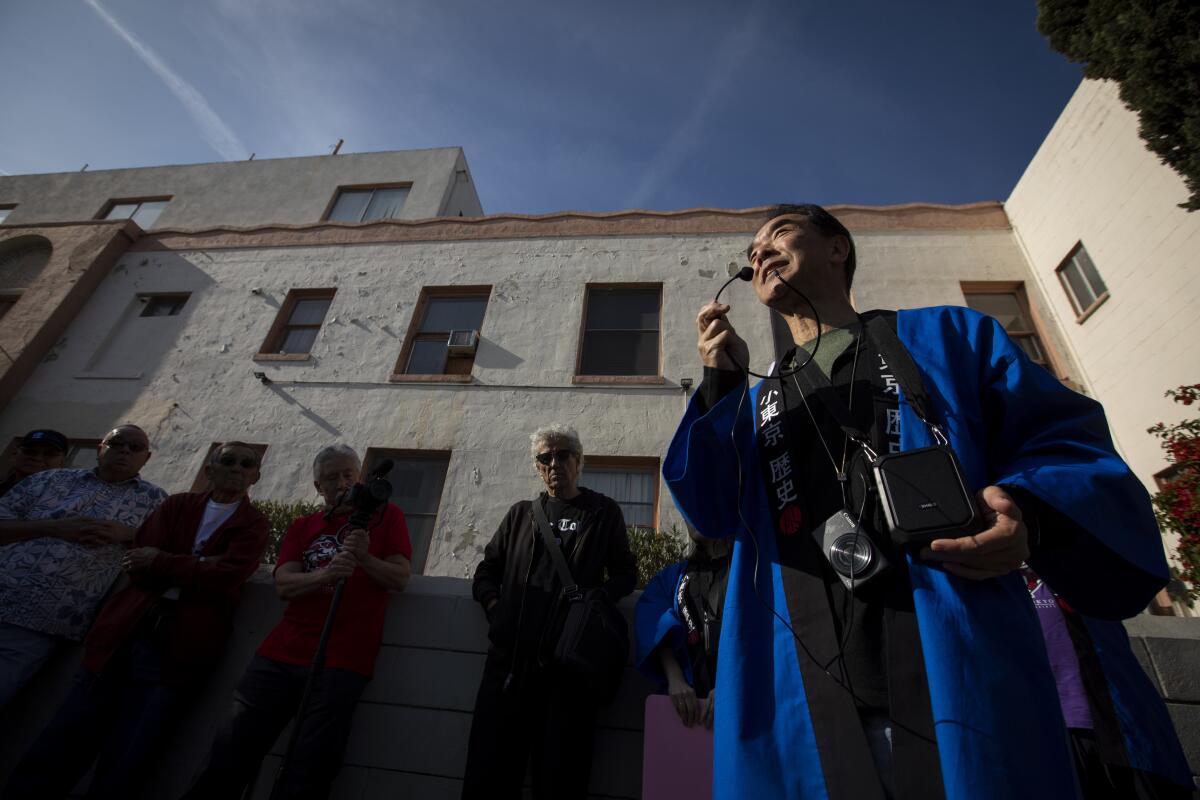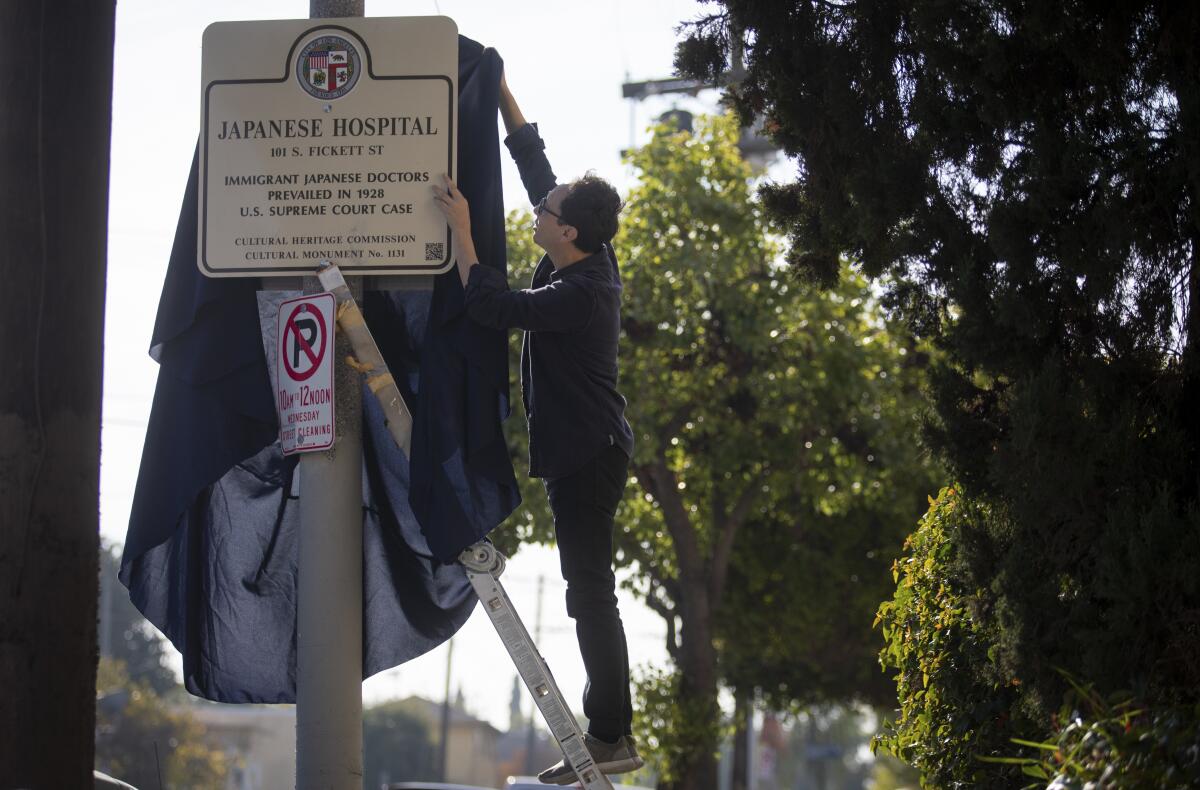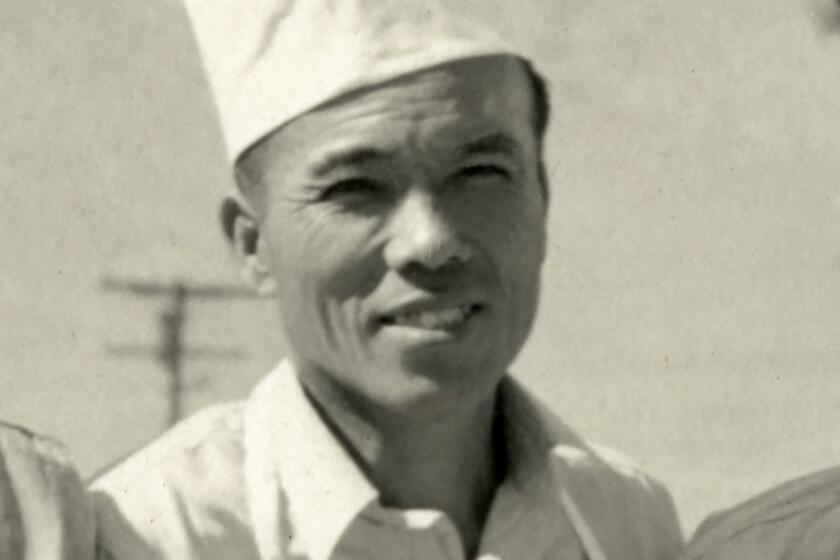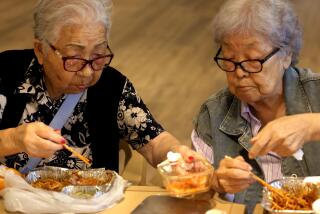Japanese Hospital — symbol of defiance of racism — honored in Boyle Heights

Before Pearl Harbor and the nationalist hysteria that led to the internment of tens of thousands of Japanese Americans during World War II, there was a thriving community of Japanese immigrants in Los Angeles’ Boyle Heights neighborhood.
Japanese churches in the neighborhood, a section of Evergreen Cemetery and a Japanese language school all have roots in that period before the war in 1941. So does the former Japanese Hospital, built to serve a community of immigrants who were routinely denied entry into public health institutions.
On Saturday members of the Japanese American community gathered to celebrate the significance of the two-story stucco building at First and Fickett Streets, which was declared a historic-cultural monument by the Los Angeles City Council in 2016. The group of about 30 included volunteers from the Little Tokyo Historical Society, representatives from the Boyle Heights Historical Society and City Council District 14, and Japanese Angelenos who were born or treated at the hospital.
They cheered upon the unveiling of a sign on a lamppost out front, which read, “Immigrant Japanese doctors prevailed in 1928 U.S. Supreme Court Case.”

“It was immigrants who were brave and decided to stand up for their civil rights and their community to build this institution,” said Kristen Hayashi, a historian with the Japanese American National Museum.
In the early 1900s Japanese immigrants in Los Angeles struggled to be accepted both as doctors and patients at mainstream hospitals. Turner Street Hospital in Little Tokyo, staffed by Japanese healthcare professionals for the care of Japanese patients, opened around 1915. It was there that Kikuwo Tashiro, a Japanese doctor and immigrant, began practicing after arriving in Los Angeles.
By the 1920s, after a devastating influenza outbreak and with the Japanese American population growing, it was clear to Tashiro and others that a bigger facility was needed. He and four other Japanese American doctors pooled their savings to create a Japanese hospital. But when they sought incorporation from the state, they were denied based on a 1911 treaty between the U.S. and Japan and alien land laws, according to the Little Tokyo Historical Society’s application for historic-cultural status.
Skeletal remains of Japanese American interned at Manzanar found in mountains
Tashiro sued, eventually winning his case at the U.S. Supreme Court with the help of attorney J. Marion Wright.
The 69-room facility opened on December 1, 1929, the result of $129,000 in private donations. It was designed by Japanese architect Yos Hirose in the Streamline Moderne style, a subtype of Art Deco that was sleeker and less ornamental, according to the application. Hirose was himself instrumental in shaping Japanese institutions in Los Angeles, designing the Koyasan Buddhist Temple in Little Tokyo and Tenrikyo Junior Church of America as well.
During World War II, the Japanese Hospital was leased to nearby White Memorial Hospital, but after the war it reverted to its original owners. The hospital moved to a larger, more modern site in Lincoln Heights in 1962, and the building later became a convalescent home, which it still is today.
Paula Miura was born at the Boyle Heights building in the 1950s. (She declined to give her exact age.) Though her family lived in West Los Angeles, they came all the way east to have the delivery done by a Japanese doctor.
“I think it was a comfort issue,” Miura said. “Having a Japanese American doctor... people understand the way you think.”
Miura, who is a sansei, or a third-generation Japanese American, said she still finds comfort in going to a Japanese dentist.
Bill Watanabe, 75, who founded the Little Tokyo Historical Society, was born in an internment camp at Manzanar. His parents, Japanese-speaking farmers who lived in Pacoima before and after the war, brought him to the hospital when he was six years old to have his tonsils removed.
“In the [San Fernando] Valley there was nothing for Japanese,” Watanabe said.
Watanabe said the building represents an important part of local Japanese-American history. He said anti-Japanese sentiment and outright racism persist today, but he hopes people who walk by the building will pay attention to the word “prevail” on the sign.
“It conveys a message that this country has flaws but it’s still a country where people can fight for their rights and prevail,” he said.
More to Read
Sign up for Essential California
The most important California stories and recommendations in your inbox every morning.
You may occasionally receive promotional content from the Los Angeles Times.












